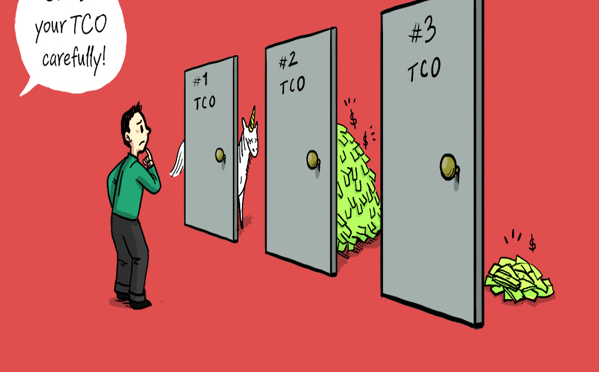What is it Costing You to Collect? Are the Odds in Your Favor?
Blog: Enterprise Decision Management Blog

If you are considering a new collections platform, you are probably already aware that the upfront price isn’t the only cost that you will pay over the lifetime of the system. How much time and effort you actually want to spend calculating the potential total cost of ownership (TCO) as part of your purchase is an individual choice. Many organizations tend to generalize, knowing that TCO isn’t an exact science, and that a new system’s benefits tend to outweigh other factors.
As a starting point you should spend some time understanding where common, easily-avoided pitfalls lurk. With this knowledge you will be able to make the right choices that can shift the TCO odds in your favor.
Two areas—a platform’s flexibility and security—can have a huge impact on an organization’s exposure to risk and result in unforeseen expenses if not properly supported.
Flexibility
The ability for a platform to easily integrate with an organization’s existing systems is an important consideration for keeping long-term costs down. The platform also needs to be able to adapt to change easily. Some platforms are agile and can be modified by internal teams, and others are more rigid and require vendor support or specific IT expertise. Naturally, a more agile system results in lower TCO.
Here are some key areas that you should look for:
- The platform should be able to access and work with your current data warehouse and create reports in whatever format is needed.
- It should interface with existing communication and imaging systems. If those systems change, it should be able to easily integrate with whatever new systems are chosen.
- Especially important with respect to platform agility is the ability to adjust quickly and easily to compliance and regulatory changes.
- Additional configuration changes should be just as easy and you should not have to rely on the vendor for implementation.
Security
Security is paramount in a modern collections platform. A single security breach not only adds extra cost, it can permanently damage a business’s reputation. Threats can come from internal sources as well as external—a robust security feature set that addresses both is important.
Important security features include:
- Integration with all internal authentication mechanisms
- Creation of granular user roles and access privileges
- Encryption and masking for all data
- Auditing and monitoring of all user activity
Costs Across the Lifecycle
Hidden costs in relation to flexibility and security can present themselves at any stage of the platform lifecycle—not just at one particular stage. To understand potential impacts to TCO it is important to look across the entire spectrum.
Organizations should then spend time determining the architecture of a platform to understand if it will introduce new risks at any of these stages because of its lack of agility. From a security perspective, organizations should research today’s standards across the platform lifecycle and then try to match them directly to the features offered by prospective vendors. Both of these steps will go a long way in assuring that the platform you work with provides the features needed to effectively safeguard against hidden risks and mitigate unforeseen costs.
There are many benefits that a modern platform can bring to a debt management organization. Effectively managing TCO by uncovering hidden costs can help an organization improve return on investment. You’ll want to partner with a vendor who will be transparent—one with the expertise needed to help you navigate common TCO pitfalls. To learn more about managing the TCO of a new collections platform, view our on-demand webinar.
The post What is it Costing You to Collect? Are the Odds in Your Favor? appeared first on FICO.
Leave a Comment
You must be logged in to post a comment.







